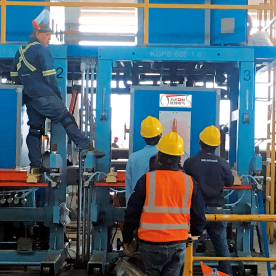[HSS blade]Exploring the Versatility and Applications of HSS Blades in Modern Machining Processes
News 2024-9-6
High-speed steel (HSS) blades have become a cornerstone in the machining industry, known for their exceptional performance and reliability across various applications. In the realm of metalworking, woodworking, and manufacturing, HSS blades play a vital role in shaping a wide range of materials with precision and efficiency. This article delves into the properties, advantages, and diverse applications of HSS blades, providing insight into why they are essential tools for professionals in the field.
Understanding HSS Blades
High-speed steel is a specific type of tool steel that is capable of withstanding high temperatures without losing its hardness. Developed during the early 20th century, HSS blades are designed to cut through metals and other hard materials at high speeds, making them ideal for high-performance cutting tools such as drills, saw blades, milling cutters, and more. The composition of HSS typically includes a combination of carbon, tungsten, chromium, and molybdenum, which contributes to its remarkable durability and ability to retain sharpness even under extreme conditions.
Advantages of HSS Blades
One of the main advantages of HSS blades is their ability to maintain hardness at elevated temperatures. This thermal stability allows them to operate effectively in high-speed cutting applications, which can generate significant heat. In contrast to carbon steel blades, which can soften and lose their edge, HSS blades retain their cutting performance, leading to longer tool life and reduced replacement frequency.

Exploring the Versatility and Applications of HSS Blades in Modern Machining Processes
HSS blades come in various shapes and sizes, catering to different machining requirements. Whether in the form of circular saw blades, milling cutters, or drill bits, the versatility of HSS blades ensures that they can be adapted to numerous applications across diverse industries.
Applications of HSS Blades
HSS blades are used in countless applications, making them indispensable in manufacturing and metalworking environments. Below are some prominent applications where HSS blades excel:
1. **Machining Operations**: HSS blades are frequently utilized in machining processes such as milling, drilling, and turning. Their ability to maintain sharp edges and resist deformation under high temperatures allows them to deliver precise and accurate cuts in various workpieces.
2. **Woodworking**: In woodworking, HSS blades are employed in tools like planers, jointers, and band saws. They provide clean cuts and smooth finishes, enabling woodworkers to achieve the desired dimensions and surface quality in their projects.

Exploring the Versatility and Applications of HSS Blades in Modern Machining Processes

Exploring the Versatility and Applications of HSS Blades in Modern Machining Processes
5. **Sawing Operations**: Circular HSS blades are widely used in saws for cutting metal and wood. They are designed to provide a clean and efficient cut, reducing the likelihood of burn marks or rough edges.
Conclusion
The use of HSS blades has significantly impacted various industries that rely on precision cutting and machining. Their ability to withstand high temperatures, combined with their toughness and adaptability, makes them an ideal choice for professionals seeking reliable cutting solutions. As technology continues to evolve, the importance of HSS blades remains evident, driving innovation and efficiency in machining operations. By understanding their properties and applications, manufacturers and craftspeople alike can harness the potential of HSS blades to enhance productivity and achieve superior results in their work.
